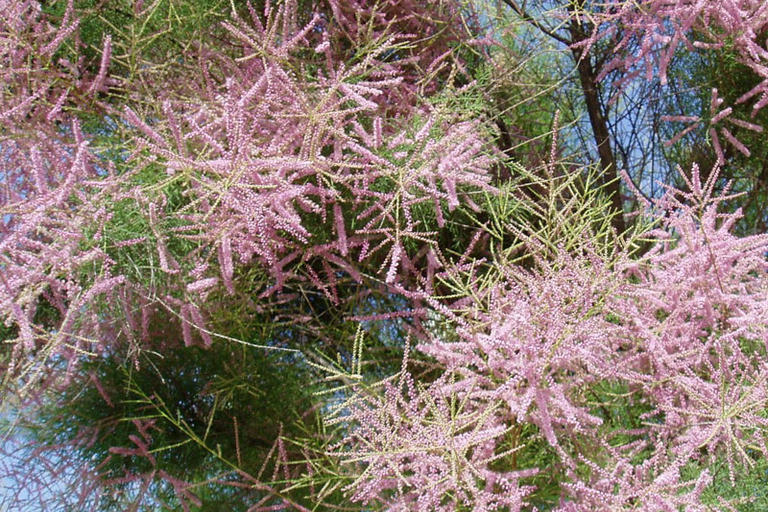
Introduction
Here is something else standing alone in the middle of the apparent monotony of the agricultural plain: a tamarisk. But what a tamarisk!
We are used to seeing tamarisks close to the coast, especially in the sand of the dunes of some beaches, as shrubs which are not very tall and which are battered and stunted by the onslaught of the sea wind.
This species with it grooved trunk and small leaves is very well adapted to soil with high salinity, and generally grows in sand and coastal lagoons along rivers and watercourses.
In fact, it is a tree, but few examples go beyond being shrubby in form, or small trees at most, because they are slow growing and so almost always die before becoming large trees, either from natural causes or because people use their wood. But there are some exceptions, like the one you can see here in this boundary just at the start of the track leading to the crops on your right. A tamarisk in the form of a tree is, therefore, rare, and they can reach heights of 8 metres or more in exceptional cases.
Its twigs and bark used to be used as an astringent. In the past, its wood was used to make receptacles for people with spleen problems to drink water. Its branches were used as ropes for water wheels owing to their flexibility.